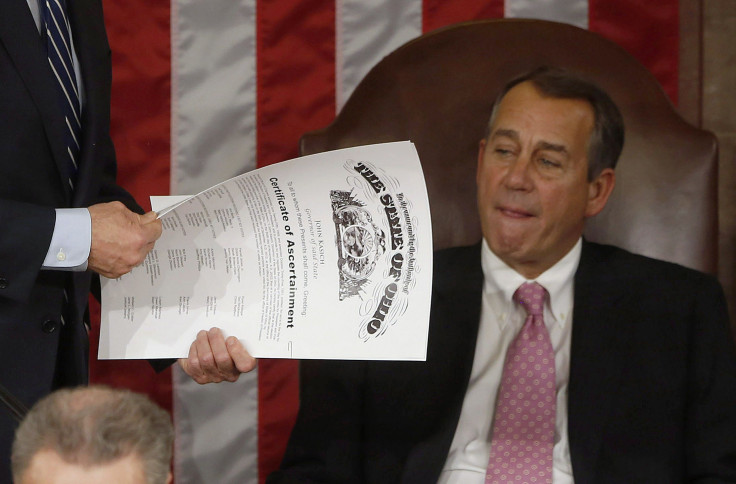What Is The Electoral College? US President Is Not Decided By The Popular Vote

U.S. citizens may think they live in a democracy. They don’t. They live in a republic and there’s the rub.
A democracy would entail electing the president by a direct vote of the people. What happens in the United States is the president is elected by the Electoral College, an arcane system set up by the Founding Fathers to ensure small states didn’t get short-changed and to keep voter sentiment in check, just in case.
There currently are 538 votes (which are subject to change depending on the Census every decade) in the Electoral College, and a candidate needs a clear majority to become president. In most states, the candidate who wins the popular vote gets all of that state’s electoral votes. Only Nebraska and Maine split their votes proportionally. The current structure of the Electoral College is laid out in the 12th Amendment; the 23rd Amendment gave the District of Columbia three votes.
Four presidents have been elected without winning the popular vote: John Quincy Adams in 1824, Rutherford B. Hayes in 1876, Benjamin Harrison in 1888 and George W. Bush in 2000.
A Reuters/Ipsos analysis published Saturday indicates Democrat Hillary Clinton has well more than the 270 electoral votes needed to capture the Oval Office, garnering 326 electoral votes to 212 for Republican Donald Trump. National voter polls show a much tighter race, some giving Trump a 1- or 2-point edge, and one giving Clinton 12 points more.
The electors meet in their respective states on the first Monday after the second Wednesday in December to make their decision. The results are sent to Congress and the National Archives. The votes then are counted in a joint session of Congress, with the winner sworn in Jan. 20.
In the early days of the republic, there were no political parties; campaigning was not only impractical, it was frowned upon, and each of the states was suspicious of succumbing to a central government.
George Washington was elected president with 100 percent of the electoral vote. The Founding Fathers didn’t want that to happen again. And they didn’t like the idea of Congress choosing the president the way parliaments choose a prime minister, feeling that would lead to political bargaining, corruption and possible influence from foreign powers.
Allowing state legislatures to choose a president also was rejected amid fears the president would be beholden to them, eroding federal authority, and a popular vote was rejected because it was unlikely voters would have sufficient information about candidates outside their state.
And so came the idea of a College of Electors whose function can be likened to the College of Cardinals electing a pope. Those considered the most knowledgeable and informed people in each state would select a president based on merit. The system was based on the Roman Centurial Assembly system that divided Roman men according to wealth into groups of 100. Each group cast a single vote for or against proposals in the Roman Senate.
The number of votes per state in the electoral system is based on the size of the congressional delegation. Because each state has two senators, the system is weighted to give small states more say in the process.
Our current setup differs from the original, but the goal remains the same. Originally, whoever came in second became the vice president. A tie in the Electoral College vote sends the election to the House where each state gets a single vote. If no candidate receives an absolute majority in the House, the election goes to the Senate, where members vote on the vice presidential possibilities. The only time that happened was 1837. The House has until Inauguration Day to decide on a president. Otherwise, the Senate’s vice presidential choice becomes the president-elect.
© Copyright IBTimes 2024. All rights reserved.






















